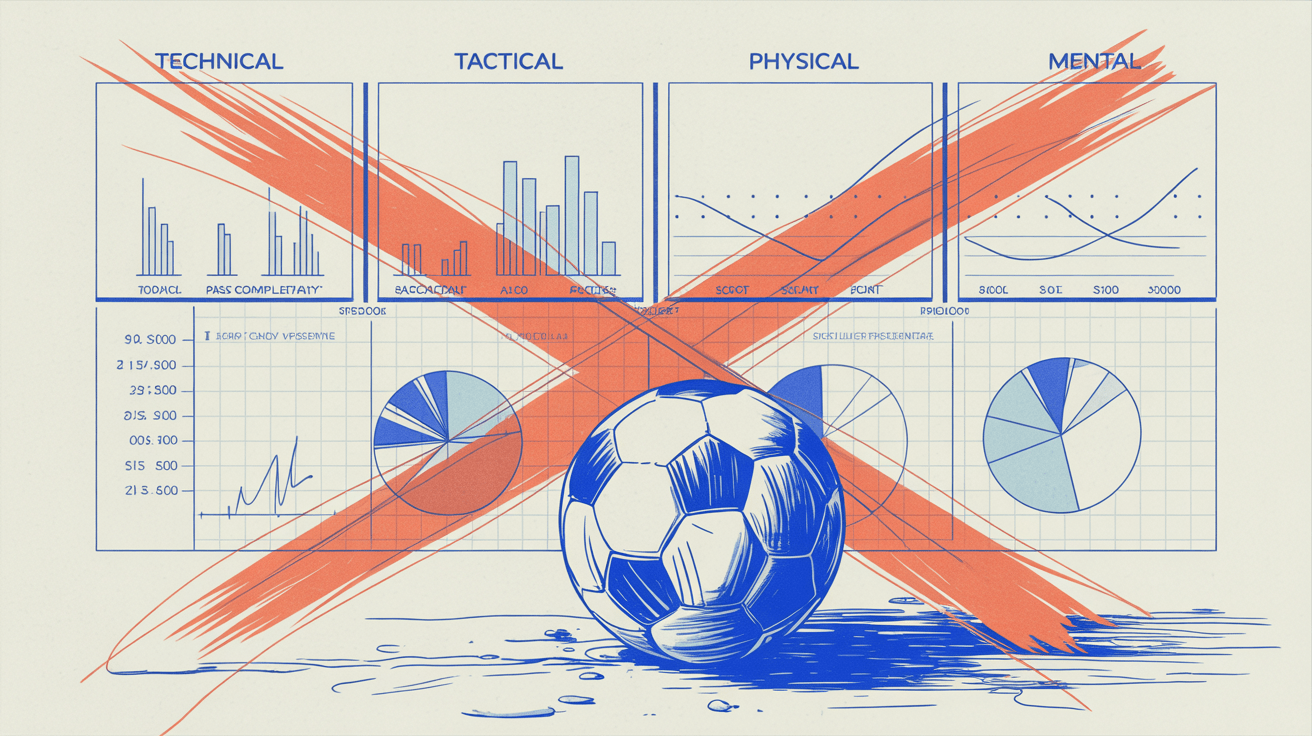If you have the ambition to become a professional scout, it is not only important to understand what happens on the pitch. You should also be able to explain what you see, either in written text or verbally. To become better at that, it massively helps to avoid catch-all terms and use clear and specific language. In this article, we explain how.
Catch-all terms
There is one method that many people who don’t really understand football use not to get exposed: the use of general, vague and multi-interpretable catch-all terms.
The things they say seem about right and aren’t too far off, but it doesn’t really add any value either. In other words, they speak a lot, but they don’t say much.
The opposite is also true: if you understand the game of football well, you can lift your communication level a lot by using specific and clear words to describe what you see.
Get away with it
Let’s give an example.
You are watching a game of football with a friend of yours. You both have the ambition to become a remote video scout at a professional club. At half time, you discuss the first half together. You both agree that the left winger of the red team didn’t play well.
Your friend gives the following explanations.
- ‘He’s clearly not comfortable on the ball.’
- ‘He seems switched-off in possession.’
- ‘He’s always one step too late.’
Imagine that he didn’t really watch the game carefully because he was texting his girlfriend the biggest part of the first half. Then he would still get away with comments like this, right?
You can’t be too far off with comments like that. And at the same time, you don’t add a lot either as you’re vague and generic.
Clear and specific
Only if you understand football well and watched the first half carefully, you are able to give more in-depth explanations about what the winger could have done better.
- ‘Even when a teammate had time and space on the ball, and the opponent was playing with a high defensive line, the left winger didn’t make any deep runs to receive the ball in behind the opponent’s defensive line.’
- ‘When the opponent’s right fullback was marking him closely, the winger didn’t drag him out of position towards midfield to create space for the left fullback to make overlapping runs.’
- ‘When the team was pressing high, and the goalkeeper passed the ball to the right central defender, the winger was clearly instructed by the coach to press him. But the distance between the winger and the central defender was too big to prevent him from finding options forward.’
“Even if he didn’t pay attention to the match, he’d still get away with comments like that”
Clear and specific
You see the difference?
In the first example, your friend gave a vague, generic explanation based on catch-all terms. It’s hard to really argue with it, and what he said isn’t necessarily untrue, but you didn’t learn anything new from it, and it’s not really helpful from a scouting point of view either.
As opposed to that, your descriptions were clear and specific. And more importantly: you used football action language. In other words: football actions (such as ‘marking’, ‘deep run’ and ‘press’) were described within the context of time and space.
Only if you understand football and watch the game carefully, it’s possible to say something like that.
Discuss
Then, the next question is whether or not what you said was true. And if it was true, the question is whether or not the things you highlighted were the main issues of the winger’s bad performance in the first half, or just side issues.
In any case, you now have a starting point to discuss the winger’s performance in a way that adds value, which is way more difficult when your friend tells you the winger was ‘not comfortable on the ball’, ‘switched off’ or ‘one step too late’.
That’s even more the case when you would enforce your explanation with video footage of multiple examples in the match where those things happened.
Frameworks
Two frameworks are very useful for improving your use of football action language. We explain both of them in separate articles.
- Splitting football actions into four phases: communication, decision ‘what’, decision ‘how’, execution.
- Four time-space characteristics of every football action: position, moment, direction and speed.



